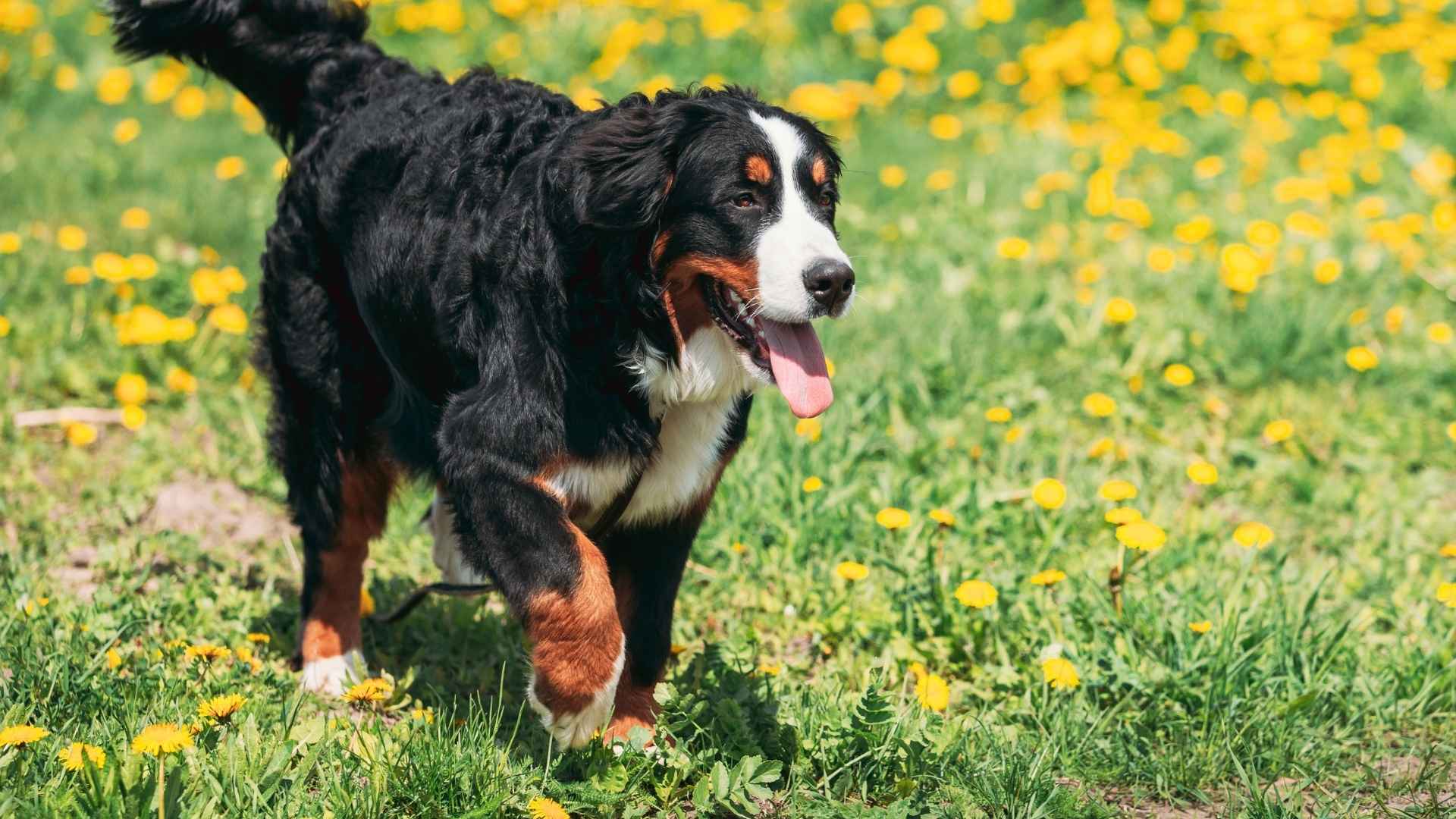What if your best friend stood three feet tall, weighed over 80 pounds, and lived for playtime? Many people imagine large dogs as calm, lazy, or just a bit too much to handle.
But the truth is, some of the most joyful, entertaining dogs in the world are big ones. They love games, love people, and absolutely love being part of the fun.
Whether it’s tossing a ball, splashing through water, or simply getting belly rubs, these breeds are known for their zest for life. They fill it with laughter, movement, and heart.
If you’re looking for a canine companion that brings the fun wherever they go, you’re about to meet some unforgettable dogs. This guide covers large dog breeds that are full of life and always ready to make you smile.
Fun‑Loving Large Dog Breeds
1. Golden Retriever
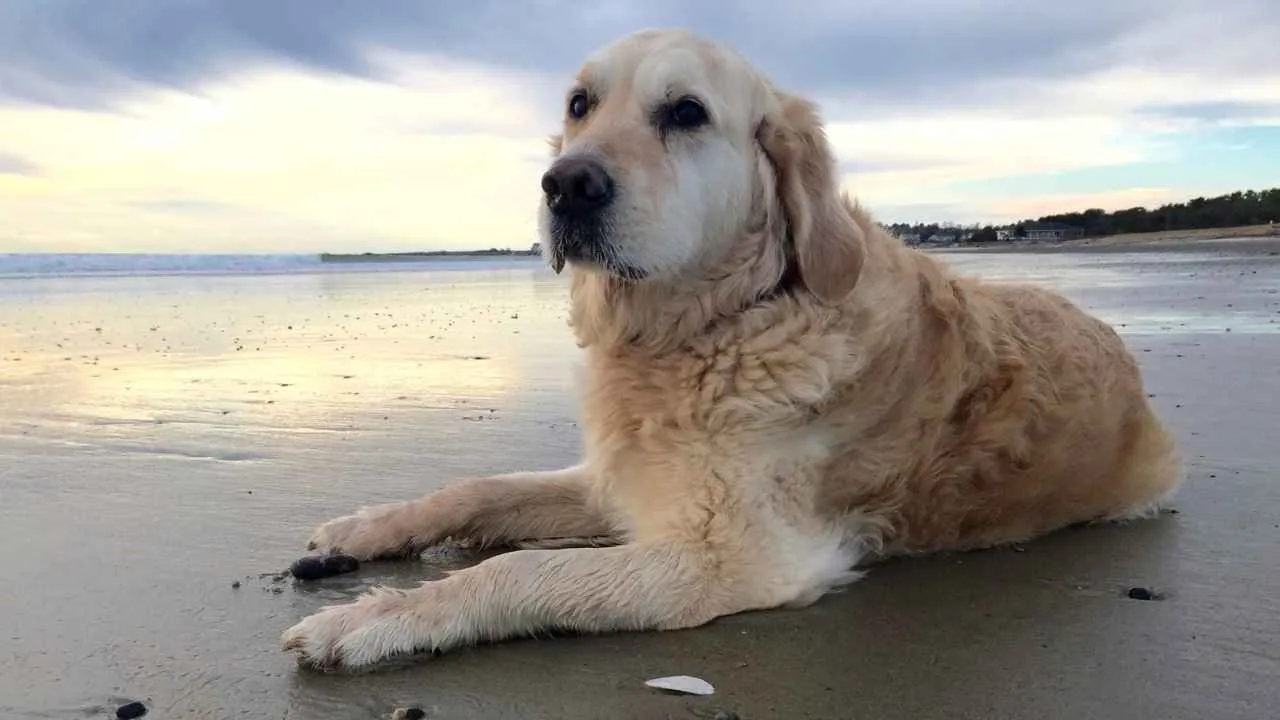
Golden Retrievers were originally bred to retrieve game from water, which shaped their constant readiness for playful tasks. They carry that same energy into every interaction, treating both people and animals as willing teammates. Whether it’s fetch or trail walks, their enthusiasm stays high.
Social Bonding Through Movement
This breed reads emotional cues with surprising accuracy, often initiating physical contact when someone seems withdrawn. They don’t want to play; they want a connection in motion. It’s this responsiveness that makes them stand out even among other dogs.
Naturally Cooperative Temperament
Known for their reliability in family settings, Golden Retrievers also show balanced energy levels during group activities. Their motivation to cooperate keeps them attentive during both spontaneous games and structured commands. They excel in multi-dog households with consistent routines.
Fun-Loving but Steady
Among fun-loving dogs, few maintain such steadiness when the environment shifts. They can go from joyful chaos to calm companionship without becoming erratic. Their ability to remain adaptable is a big reason they rank high among large and playful dogs.
2. Labrador Retriever
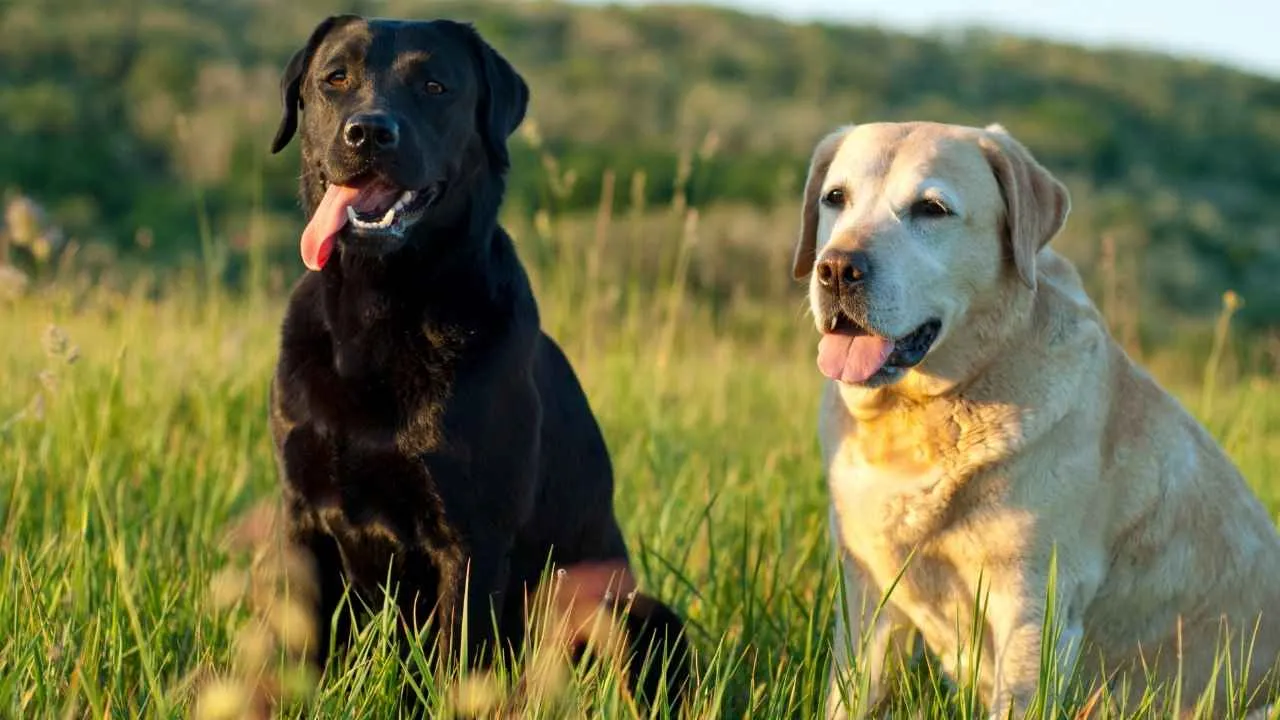
Labradors were originally bred in Newfoundland to haul fishing nets and retrieve waterfowl, shaping their high-drive temperament, as per Many Pets. That working legacy translates into their need for regular, purposeful activity. Without mental or physical outlets, their behavior tends to slide into chaos quickly.
Socially-Driven and Task-Oriented
Their natural inclination toward task completion makes them easy to engage in group play or simple obedience games. They tend to shadow people during activity breaks and wait for cues. While not bred as guard dogs, they’re deeply aware of their environment and will signal unfamiliar movement.
Emotionally Balanced in Dynamic Homes
Labradors rarely show anxiety during change, which makes them dependable in unpredictable households. They absorb energy from people and settings, matching pace without resistance. That’s a key reason they’re often referred to as gentle giants despite their bouncy personalities.
Widely Loved for Practical Reasons
As a popular dog breed, the Labrador owes its reputation not to trend but to consistent temperament and versatility. Their short, water-resistant coat needs little grooming, and their food motivation simplifies training. They also transition easily between working roles and casual play without behavioral drops.
3. Boxer
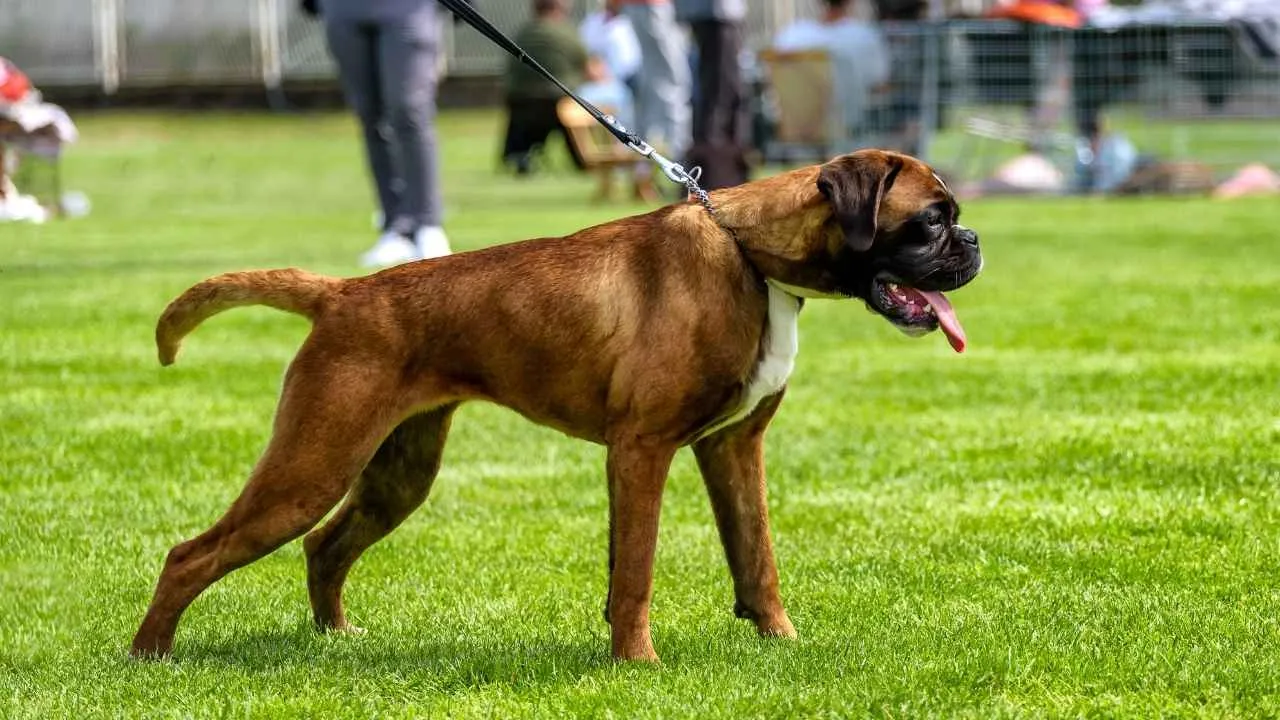
Boxers are known for their ability to pick up subtle sounds and movements with impressive speed. They often react before their handler notices a change in the surroundings. This makes them naturally tuned to their environment, both indoors and in open spaces.
Energy Rooted in Structure
Their physical routines benefit from short, high-energy activities like agility drills or tracking tasks. These exercises help manage their muscular build while giving them clear goals to focus on. Structure also prevents overstimulation in stimulating environments.
Reliable Around Other Animals
With early social exposure, Boxers can adjust their body language and behavior when interacting with other pets, as per Petplan. Their communication style relies more on posture than vocalization. This makes them easier to integrate into homes with animals of different energy levels.
Emotionally Responsive to Families
Boxers often mirror the tone and pace of the people they spend time with, especially children. Their consistency makes them dependable family pets, while their alertness provides added peace of mind. Their sensitivity and memory contribute to their reputation as a loyal dog.
4. Bernese Mountain Dog
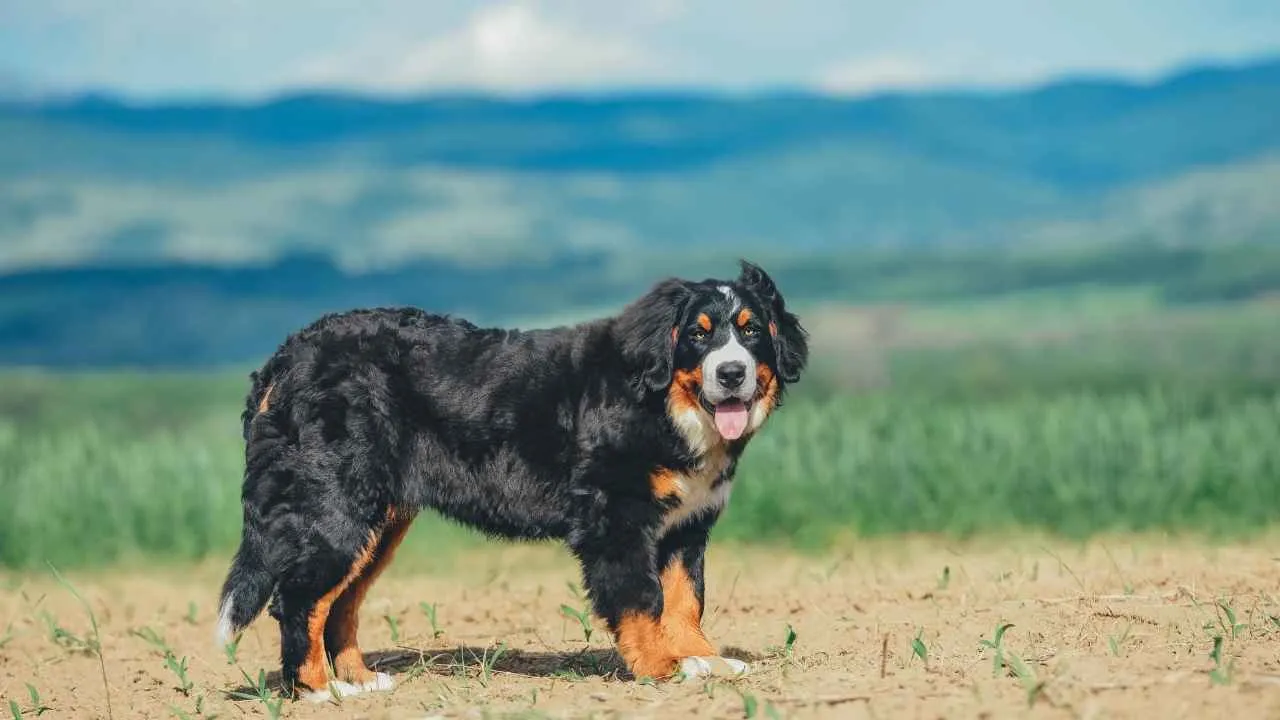
Bernese Mountain Dogs were developed in Switzerland for pulling carts and herding livestock. Their muscular build supports playful stamina, especially in open fields or cool-weather hikes. They enjoy physically engaging games but without frantic behavior.
Gentle With Familiar Circles
They show a noticeably soft demeanor when interacting with children and familiar family members. Even during excitement, they avoid bumping or overwhelming those around them. That spatial awareness makes them well-suited for homes with mixed age groups.
Naturally Drawn to Human Contact
Their affectionate nature is visible through physical closeness—they often sit beside or lean into their humans. They seek interaction through quiet gestures rather than loud demands. This closeness isn’t needy, but calmly reassuring.
Surprisingly Agile for Their Size
Though categorized among big dogs, Bernese Mountain Dogs have strong coordination when moving across uneven ground. This makes them excellent for activities like agility walks, pasture games, or trail roaming. They stay steady even on loose soil or slopes.
5. Irish Setter
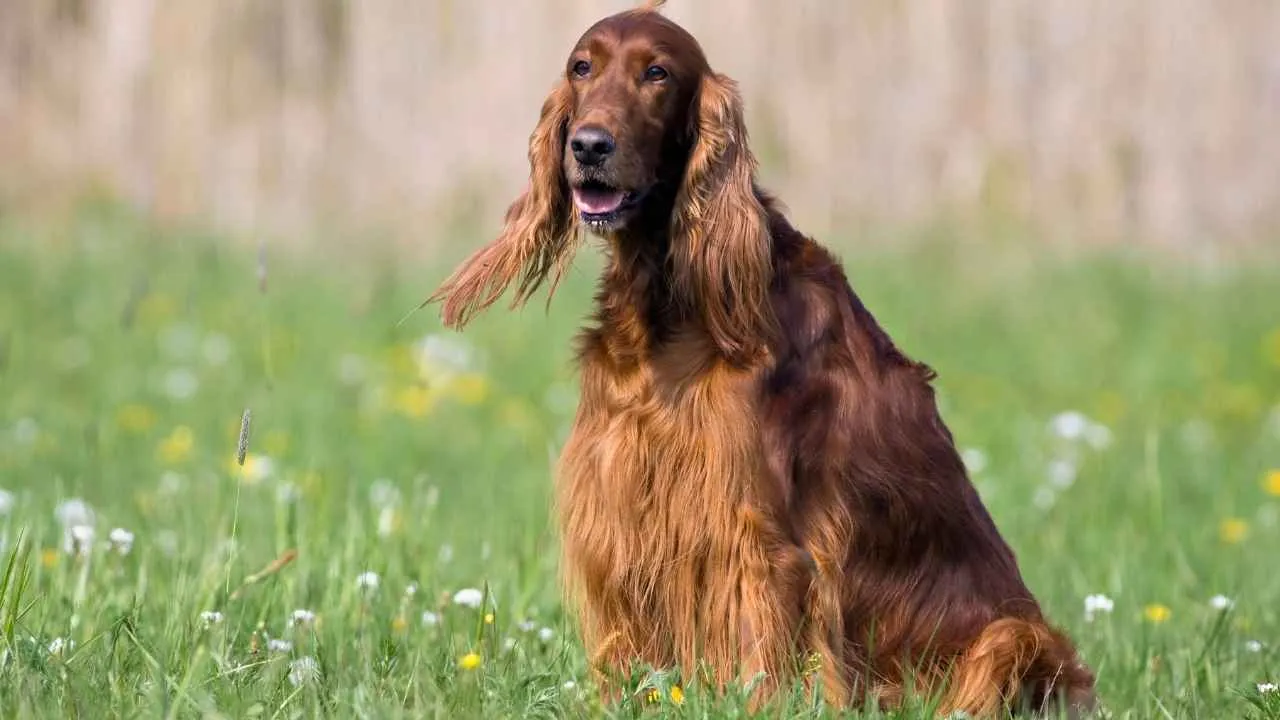
Irish Setters have been bred for high-endurance tasks like upland game hunting across wide fields. Their natural drive favors constant motion, which helps maintain a balanced temperament. They benefit most from environments that allow running and regular physical activity.
Natural Fit for Active Homes
They enjoy shared routines where interaction and structure come together consistently. In homes that include regular family activities, they are more attentive and manageable. Their temperament stays steady when they’re part of a predictable daily rhythm.
History in Every Strand
The deep chestnut-red coat became standard in the 19th century after breeders focused on solid coloring, as per Dogs Australia. This change aligned with improvements in agility and working performance in the field. Their coat also resists mild weather when outdoors for long periods.
Enthusiasm That Needs Direction
With clear instructions and consistent handling, they settle into structured routines with ease. A well-guided Setter shows impressive impulse control and long-term good behavior. Their energy and sociability make them a perfect match for households that stay physically engaged.
6. Old English Sheepdog
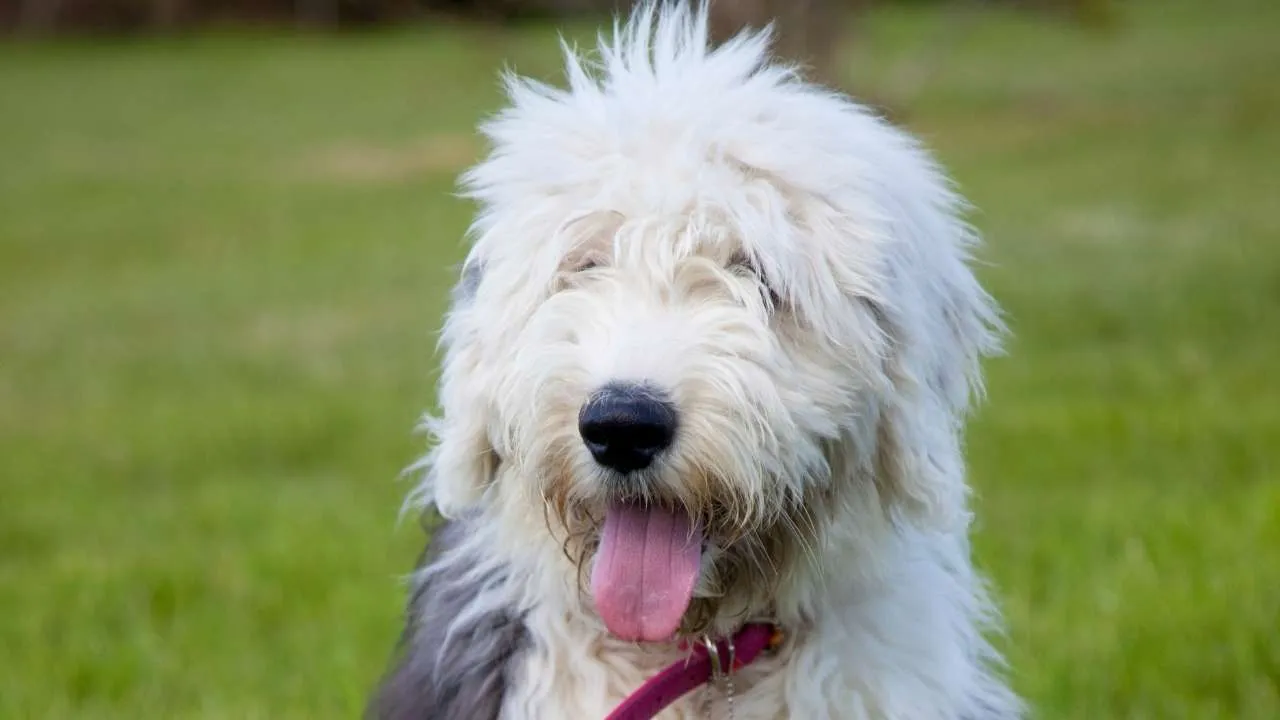
With a thick, weather-resistant double coat and compact muscular build, this breed thrives in open spaces. It was originally developed to drive cattle long distances, so endurance comes naturally. Even in hot climates, proper grooming helps maintain their comfort level.
Active Minds Need Engagement
Old English Sheepdogs excel when tasks involve problem-solving and movement together. Games that combine navigation and tracking challenge their instinctual intelligence. Consistent physical exercise helps prevent boredom-related behaviors, especially in free-range settings.
Natural Sense of Order
They display a calm assertiveness when navigating busy environments, including parks or livestock zones. This inner orderliness makes them great at instilling good behavior when raised alongside younger dogs. Their body blocking is subtle but effective when guiding movement.
Surprisingly Gentle Nature
Despite their size, their responses are measured and socially aware, often showing a sweet side when interacting with toddlers or timid animals. They adjust their body language without instruction. That adaptability is why they remain such a trusted presence in varied group settings.
7. Chesapeake Bay Retriever
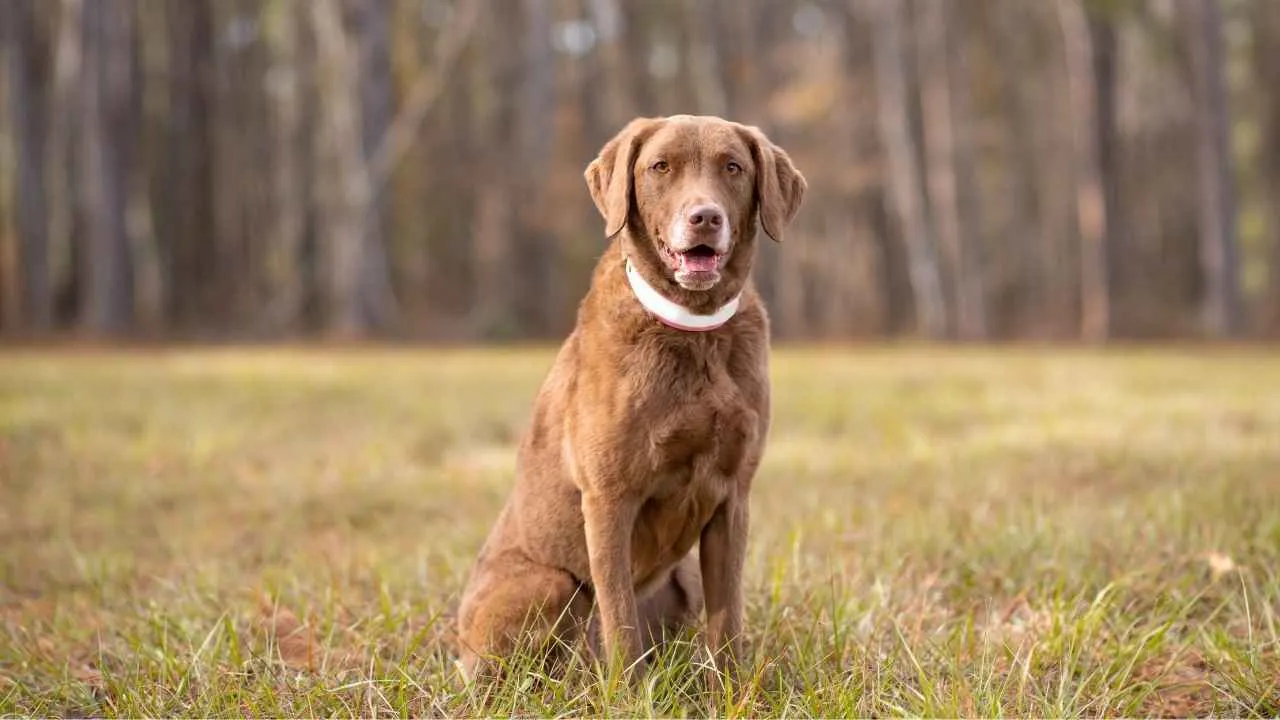
Originally developed to retrieve waterfowl in the icy waters of the Chesapeake Bay, this breed was selected for its stamina and determination. Their thick, oily double coat insulates against cold, while their muscular frame supports long hours of physical activity. It’s a working dog that doesn’t hesitate, even in challenging environments.
Loyal but Selective With Strangers
They form intense bonds with their family but may act reserved with unfamiliar faces. Early socialization is important to shape their comfort around varied people and settings. With proper exposure, their confidence and calm can translate into smooth social interactions.
Driven by Tasks and Purpose
These dogs are most content when they’re engaged, whether it’s tracking scent trails, learning commands, or practicing fieldwork drills. Without regular mental stimulation, their energy can shift into stubborn or uncooperative behavior. They’re wired to work and solve, not just relax.
Independent Compared to Peers
Compared to other breeds in the retriever group, they show a more self-reliant personality. They don’t seek constant attention but are responsive when there’s a task to complete. Their mindset suits families who enjoy active time without needing constant engagement.
8. Dalmatian
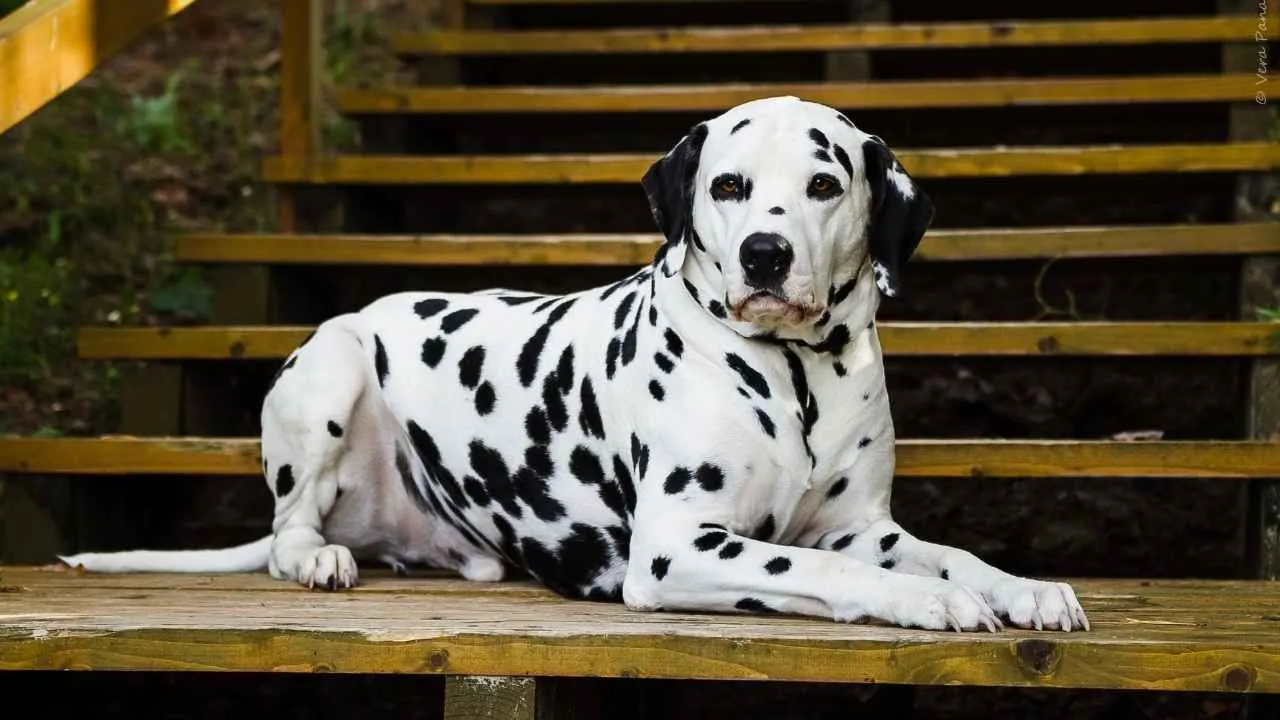
Dalmatians were once bred to run beside carriages, helping keep the path clear and animals protected. That job shaped their strong pacing instincts and keen attention to movement. Their ability to maintain rhythm over long distances still shows up in active settings.
Precision-Focused Play
This breed enjoys structure—games with rules and routines suit their sharp timing. Tasks like obstacle weaving or scent trails challenge them in the right way. Without direction, they often invent their own games that involve chasing, circling, or pattern-based movement.
Sensitive But Active
They respond quickly to loud voices, fast actions, or sudden environmental changes. If handled gently but with structure, they settle into daily routines with less tension. Their emotional tracking makes them unusually responsive to their surroundings, including people’s tone.
Spot Patterns That Evolve
Dalmatian puppies are born completely white, and their first spots usually start appearing by two weeks of age, as per the AKC. These markings continue to develop for months as they grow. Breeders often observe how patterning can hint at lineage or related coat traits.
9. Weimaraner
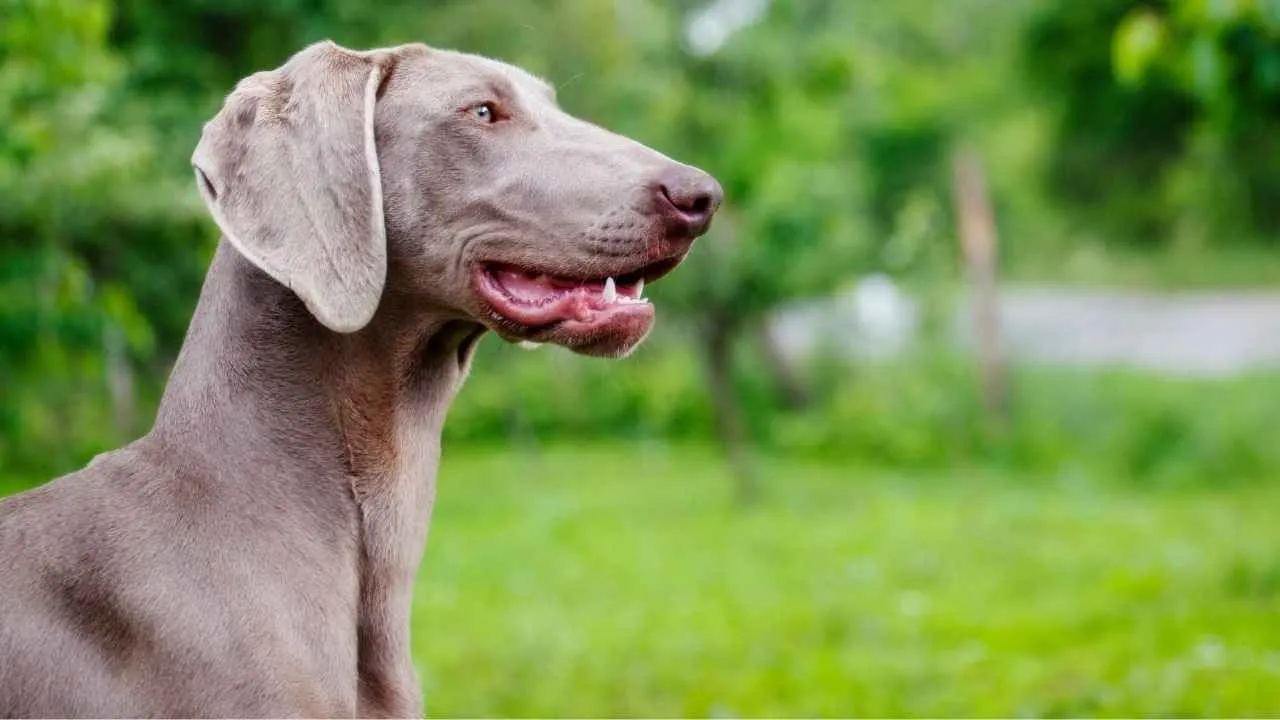
Bred in 19th-century Germany for hunting boar and deer, Weimaraners are built for speed and endurance. They carry a lean frame that supports long-distance movement without tiring easily. Their instincts stay sharp even in distraction-heavy environments.
Bonds That Require Presence
They form deep attachments to their owners and expect to be involved in daily routines. This closeness shows in how they follow from room to room, waiting for cues to engage. It’s a trait that feels more participatory than simply affectionate.
Constant Cognitive Engagement
This breed requires mental exercise that goes beyond basic obedience. Puzzle-based games, tracking exercises, or new terrain all help meet their drive for stimulation. Without it, they tend to invent their own outlets—often through disruptive behavior.
A Quirk Seen in Resting
One commonly noted behavior is how they sprawl upside down, with legs stretched in odd directions while asleep. It’s a familiar sight among owners, showing how easily their high-energy bodies can drop into total rest. It’s odd, but entirely normal.
10. Rhodesian Ridgeback
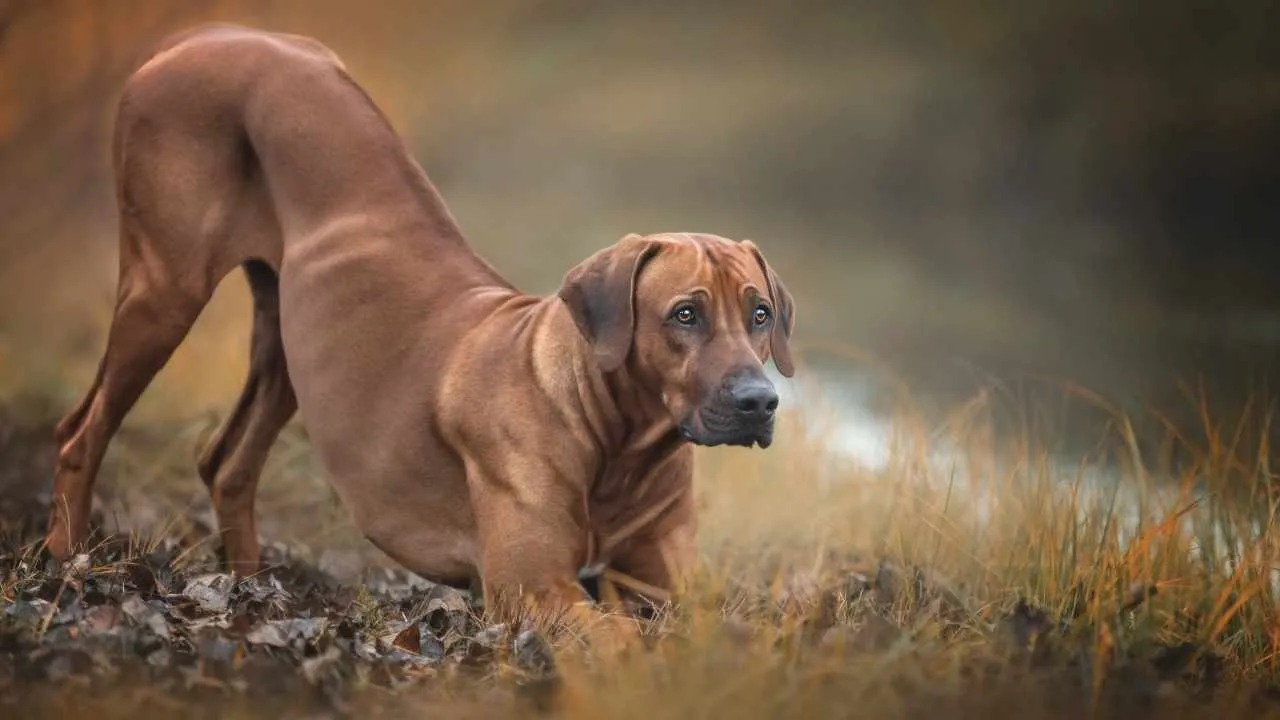
Rhodesian Ridgebacks are known for their ability to self-entertain, often exploring areas confidently without needing constant direction. This independence is rooted in their original purpose—tracking lions across rough terrain. Even during solo moments, they stay alert and engaged with their environment.
Reserved But Loyal Energy
Though not overly expressive at first, they build deep bonds and show enthusiasm through action more than noise. Their physical play may seem low-key, but it carries strength and coordination. They prefer activities with a purpose, like long runs or agility-based games.
Strong Body Control
This breed shows impressive balance while in motion, a trait shaped by years of use in rugged African landscapes. Their stride is powerful but measured, giving them an edge in controlled outdoor play. They rarely waste energy, even during high-movement games.
Signature Ridge Trait
The breed gets its name from the clearly defined ridge of hair along its spine, growing in the opposite direction. It’s a natural and distinctive feature found in very few breeds globally. The ridge appears early in puppyhood and is often used as a key identifier by breeders.
Conclusion
For families looking beyond small breeds, big dog breeds offer more than just play—they bring stability, purpose, and fun. When given room to move and a chance to bond, they often grow into a devoted family member.
These giant dog breeds need regular walks, mental and physical exercise, and time spent in familiar routines. Without those outlets, even a highly intelligent dog can show signs of boredom. But with the right balance, they thrive—and help others thrive too.
Many of these dogs are listed by the American Kennel Club as excellent family pets due to their adaptability and steady nature. Aggressive behavior is rare when boundaries and early socialization are in place.
Whether you’re adopting from a breeder or opening your heart to rescue dogs, choosing a fun-loving large breed can add years of adventure, cuddles, and unforgettable memories to your life.


